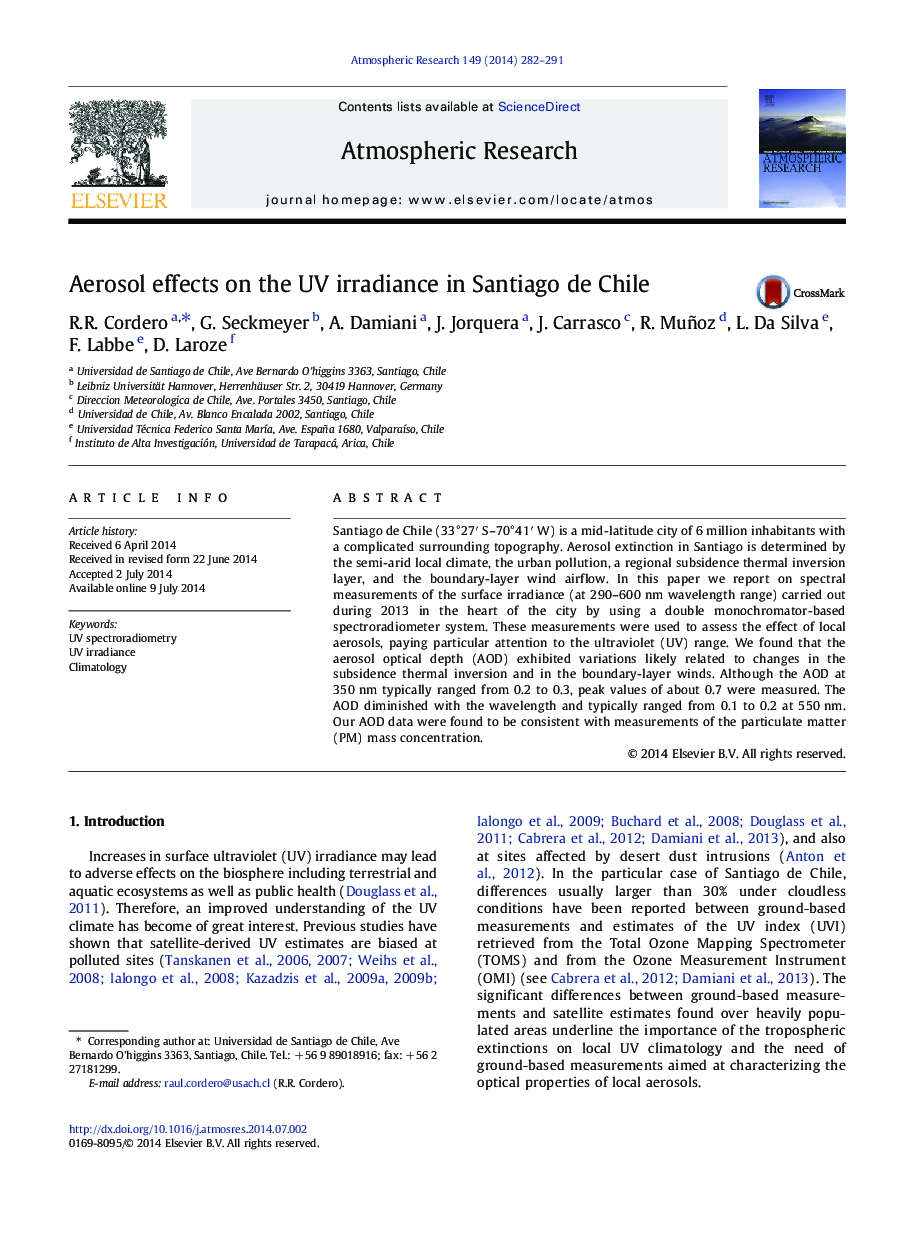| Article ID | Journal | Published Year | Pages | File Type |
|---|---|---|---|---|
| 6343532 | Atmospheric Research | 2014 | 10 Pages |
Abstract
Santiago de Chile (33°27ⲠS-70°41ⲠW) is a mid-latitude city of 6 million inhabitants with a complicated surrounding topography. Aerosol extinction in Santiago is determined by the semi-arid local climate, the urban pollution, a regional subsidence thermal inversion layer, and the boundary-layer wind airflow. In this paper we report on spectral measurements of the surface irradiance (at 290-600 nm wavelength range) carried out during 2013 in the heart of the city by using a double monochromator-based spectroradiometer system. These measurements were used to assess the effect of local aerosols, paying particular attention to the ultraviolet (UV) range. We found that the aerosol optical depth (AOD) exhibited variations likely related to changes in the subsidence thermal inversion and in the boundary-layer winds. Although the AOD at 350 nm typically ranged from 0.2 to 0.3, peak values of about 0.7 were measured. The AOD diminished with the wavelength and typically ranged from 0.1 to 0.2 at 550 nm. Our AOD data were found to be consistent with measurements of the particulate matter (PM) mass concentration.
Keywords
Related Topics
Physical Sciences and Engineering
Earth and Planetary Sciences
Atmospheric Science
Authors
R.R. Cordero, G. Seckmeyer, A. Damiani, J. Jorquera, J. Carrasco, R. Muñoz, L. Da Silva, F. Labbe, D. Laroze,
